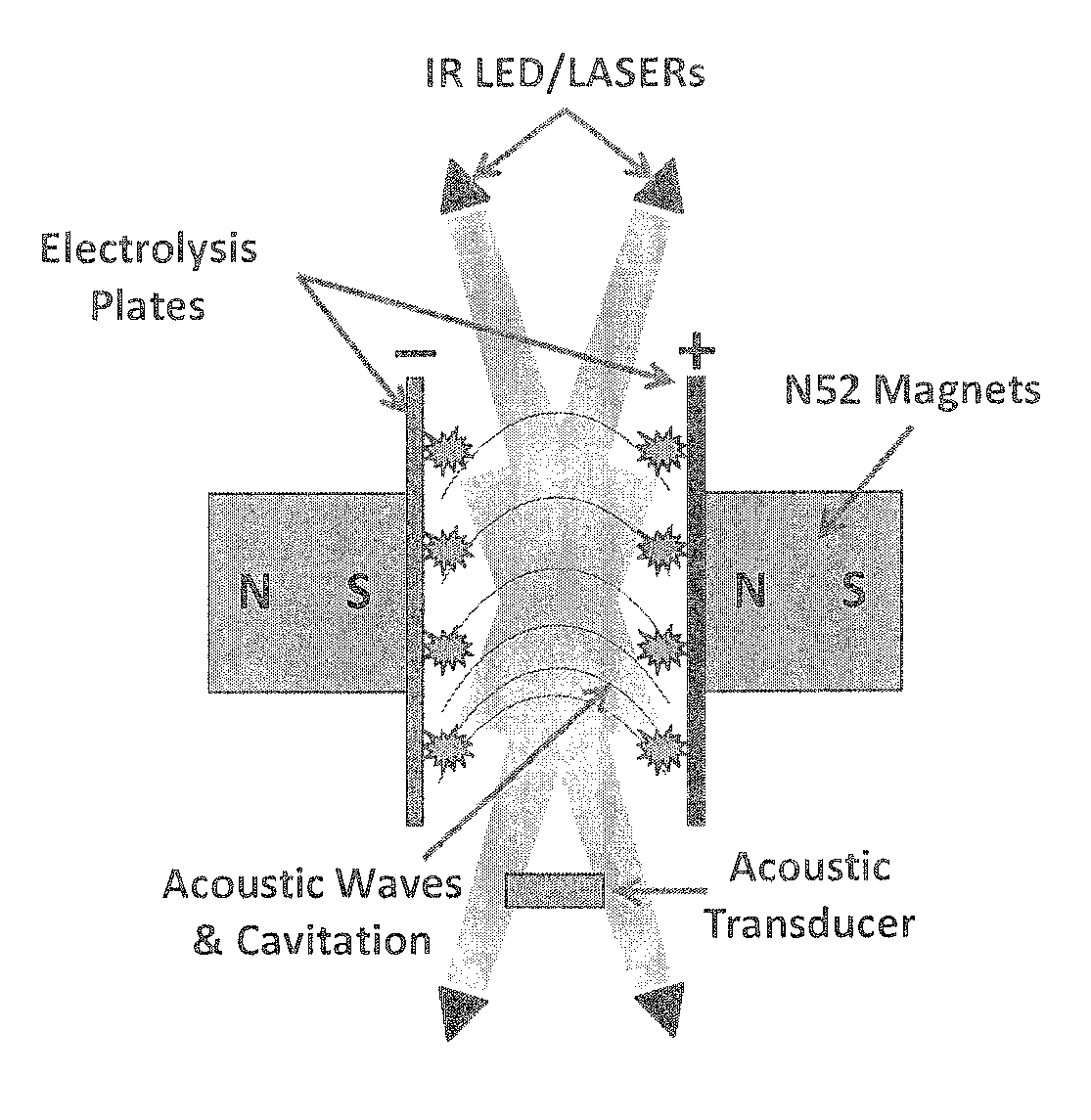Methods for enhancing water electrolysis
a technology of electrolysis and water, applied in the field of electrolysis of water, can solve the problems of ineffective modalities, inefficient and energy-intensive water electrolysis applications, and ineffective temperature, so as to improve the rate of self-ionization, increase covalent and hydrogen bond movement, and efficient dissociation of water into hydrogen
- Summary
- Abstract
- Description
- Claims
- Application Information
AI Technical Summary
Benefits of technology
Problems solved by technology
Method used
Image
Examples
Embodiment Construction
[0027]FIG. 2 is a schematic diagram identifying subsystems which will subsequently be described in detail. In contrast to the usual application electric current / voltage via plates 202, 204 to effectuate electrolysis, the overlapping modalities taught herein build on each other's qualities to provide an environment whereby water molecules will more readily dissociate. In other words, the energy reduction concepts are symbiotic in that they each enhance each other. The combined use of acoustic cavitation 206, vibrational enhancement with specific IR exposure 208, a strong surrounding magnetic field 210 together improve mass transport near the electrodes (plates) and movement within the electrolysis reaction chamber. The acoustic transducer placement enhances mass transport by inducing a convective flow within the reaction chamber.
Acoustic Cavitation
[0028]Acoustic cavitation creates micro bubbles. In this particular application the micro-bubbles form primarily on and around the electro...
PUM
| Property | Measurement | Unit |
|---|---|---|
| Nanoscale particle size | aaaaa | aaaaa |
| Nanoscale particle size | aaaaa | aaaaa |
| Nanoscale particle size | aaaaa | aaaaa |
Abstract
Description
Claims
Application Information
 Login to View More
Login to View More - R&D
- Intellectual Property
- Life Sciences
- Materials
- Tech Scout
- Unparalleled Data Quality
- Higher Quality Content
- 60% Fewer Hallucinations
Browse by: Latest US Patents, China's latest patents, Technical Efficacy Thesaurus, Application Domain, Technology Topic, Popular Technical Reports.
© 2025 PatSnap. All rights reserved.Legal|Privacy policy|Modern Slavery Act Transparency Statement|Sitemap|About US| Contact US: help@patsnap.com



